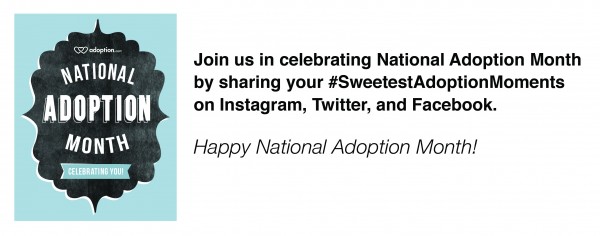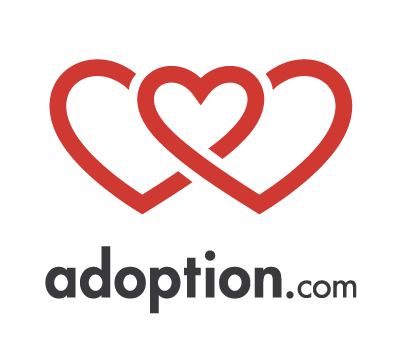What I Wish I’d Known About Post-Adoption Depression
Read Part I of this story here: When I Began My Adoption Journey, I Had Never Heard of Post-Adoption Depression. Read Part II here: My Descent into Post-Adoption Depression Began on Placement Day
I had absolutely no idea at the time that there was a name for what I was going through Post-Adoption Depression Syndrome (PADS). I just thought I was a horrible mother who would lose my temper and snap at Olivia over the little things she did. I realized that most of her behaviors resulted from her unceremonious upheaval (the adoption agency basically handed her over to us with no details about her. The attitude was, more or less, “good luck with that”), but what I wish I’d known is what I know now, which is, in the words of Barbara Defazzio, LMHC, DCFC: “A parent needs to understand that the symptoms (of PADS) are normal and not based on failure (and being a) bad parent.”
Emily Foltz-Holland, LMHC and Certified Clinical Trauma Professional define Post-Adoption Depression Syndrome (PADS) as “depressive and adjustment symptoms that can be experienced after adoptive placement. It is often compared to Perinatal Mood and Anxiety Disorder (PMAD—this includes Postpartum Depression).” She also states that as an LMHC, she “find(s) this issue to be significantly unknown, both to adoptive parents as well as mental health providers.”
According to Defazio, one reason PADS is not a “widely recognized syndrome in the therapeutic community (is that) ‘syndromes’ are usually identified as a cluster of symptoms leading to a mental health diagnosis.” Foltz-Holland adds, significantly, “The lack of knowledge and awareness creates quite a disservice to adoptive parents as we (providers) may fail to catch this specific issue and may fail to normalize the experience. There are so many unhelpful motherhood myths which lead to suffering in silence.”
Bonding difficulties, the child’s possible developmental issues, lengthy adoption processes, and financial stressors can all feed into adoption problems during a time that most people on the outside looking in are expecting couples to be ecstatic and nurturing bastions of parenthood.
Foltz-Holland continues, “Additionally, social media … show us that we need to be the perfect mom who balances work and home. This all contributes to shame, personal denial, and suffering in silence. There is a stigma about mental health in general, but I think the bigger issue is our myths about how motherhood ‘should’ be rather than a shift toward being ‘human’ mothers … There can (also) be conflicted feelings about … transitioning into a mothering role without having given birth.”
Post-Adoption Depression vs. Postpartum Depression: Similarities and Differences
Post-Adoption Depression and Postpartum Depression share a few characteristics such as sleep issues, difficulty transitioning into motherhood, and bonding and attachment problems. Perhaps surprisingly, however, Defazzio states: “PPD and PADS sound very similar, but there is little correlation between the two.” PPD is largely caused by a “sharp drop in the (woman’s) hormones” immediately after giving birth. PPD “can be mild or severe … Once treated, normal bonding can usually occur.”
While PPD is rooted in physical causes, PADS is emotionally based. According to Defazzio: “It is mostly caused by unmet or unrealistic expectations … The symptoms of depression are the same, and they are very real.” She gave this example: “I will tell you that at my last seminar at the Child Welfare Summit … an adoptive parent told me that she spent the first six months post-adoption ‘sitting in a closet crying and eating chocolate.’ Untreated symptoms of PADS will often lead to failed attachments.”
As for my own experience, our adoption counselor and adoption agency were, frankly, useless in helping me identify resources to deal with our feelings and struggles. I felt so lost, and I was terrified my child would be taken from me (more of a fear, I think, in adoptive parents than biological parents because you have to “qualify” to be an adoptive parent, whereas laws rest heavily in favor of birth parents). I think that, too, is another key difference between postpartum depression and PADS.
According to Defazio, families do not even seek professional help until they are in absolute crisis and anger is the pervasive attitude throughout the family. In fact, she adds, “I am also the Director of Clinical Services at a local children’s home. The place is full of failed adoptions and abandoned children … Now I will not let the facility accept children unless the parents are willing to come in and take part in family therapy to repair the adoption.”
Defazio makes the point that all adoption is about loss—the biological parents lose, the child loses, and the adoptive parents lose (because they go into it “expecting instant happiness, and when it does not come, they are afraid to tell anyone for fear of looking like less-than-perfect parents”). Personally, I found that well-meaning people honestly believe that the child should somehow be grateful to be getting a loving home where they are wanted, particularly in the case of older (by that I mean non-infants) children or those from orphanages. But it’s still a loss and major attachment disruption, and it’s a devastating loss to a child who only knows a certain routine or way of life.
Do you have PADS? Signs and Symptoms.
Foltz-Holland states that PADS symptoms can include:
- Mood fluctuations—depressed mood, irritability, crying spells, a feeling of being overwhelmed, shame, and lowered self-esteem
- Sleep, appetite, and concentration disturbances
- Physical symptoms—lack of energy, fatigue, and somatic issues
- There may also be the presence of strong feelings about being a parent and possible strong feelings about the baby/child.
Teresa Guerard, LMHC, says of clients who come to her practice: “The moms who come to us have cortisol levels off the charts (cortisol is produced under stress). Usually, moms are not on medication but probably should be … They’re burnt out by the time they come to me. These families need so much support, and there’s just not a lot of it out there.” Ms. Guerard went on to state that parents are “constantly searching” for answers, but the danger in internet support groups is that there are people sharing problems but often not a lot of constructive answers offered. She says that school counselors frequently don’t understand the issue(s), and parents “need people who understand, not just someone second-guessing their parenting skills.”
Because PADS is not widely known or recognized by parents, physicians, or mental health providers, other adoptive parents are often the first line of help and support. When asked about where parents should turn for help, Foltz-Holland advises new mothers to “try and not a label (bad vs. good) any ambivalent feelings about the adoption process and all that comes with post-placement. We are ‘human’ parents who can and will be affected by the good, bad, and ugly that parenting brings. It is okay to speak out and speak up regarding PADS, for this is how we can combat the ongoing silent suffering.
“It’s important to build a support system, both informally through friends and family and formally with support groups. Support groups can be one of the most helpful interventions for PADS, as the post-adoptive experience can be validated and normalized. Look for a counselor who is adoption competent and/or trained in Perinatal Mood and Anxiety Disorders. Additionally, do not be afraid to seek psychiatric care if necessary … (children) deserve healthy parents.” Guerard echoed Foltz-Holland’s sentiments: “Parents need a therapist who knows about post-adoption issues and attachment.” Most importantly, they need a therapist who works with both the parents and the child. Guerard was very clear that if parents have a counselor who works solely with the child in isolation, “Run!”
Both education and support are essential in dealing with PADS. Defazzio’s advice is simple: “The key to addressing this issue is to start before the adoption ever takes place. We need to help families and children develop ‘realistic expectations’ for what the adoption is going to be like before (emphasis hers) the child is placed. I always tell families that adoption is about loss and that loss is a life-long and very normal part of the process. Feeling loss does not mean that the adoption is second best or that it is not successful … The key is being able to discuss and deal with the loss issues together. The most successful adoptive families are those who are realistic about the core issues of adoption and are not afraid to discuss them openly. Adoption support groups are probably the best option for parents experiencing this issue to receive non-judgmental support.” Additionally, medication is sometimes appropriate for dealing with PADS.
Coping Mechanisms for Dealing with PADS: The Experts Give Advice
Foltz recommends the following techniques for coping with PADS (and they’re kid-friendly!):
- Physical activity – Walk or jog with your baby in a stroller or, in the case of older children, find an activity that can benefit both you and your child. Yoga and stretching are great and can be done outside of a group or formal class. There are lots of good DVDs out there to support this kind of exercise.
- Cognitive coping and self-talk – Cognitive coping involves your own feelings and interpretation of situations and how you act on these thoughts. For example, in the case of a baby, you can actually talk to yourself and express your feelings out loud because he or she “cannot understand what you are saying, just that your tone is soft and nurturing.” Additionally, speaking aloud helps your child with language development.
- Incorporate mindfulness into your activities. With mindfulness, we are intentional about observing and noticing experiences without judgment.” Be present and aware of whatever you are doing, whether it’s eating, walking in nature, sitting still, or listening to music.
- Take time for yourself. Instead of aiming for huge blocks of time just for you, try working in small moments throughout your day to nurture yourself.







